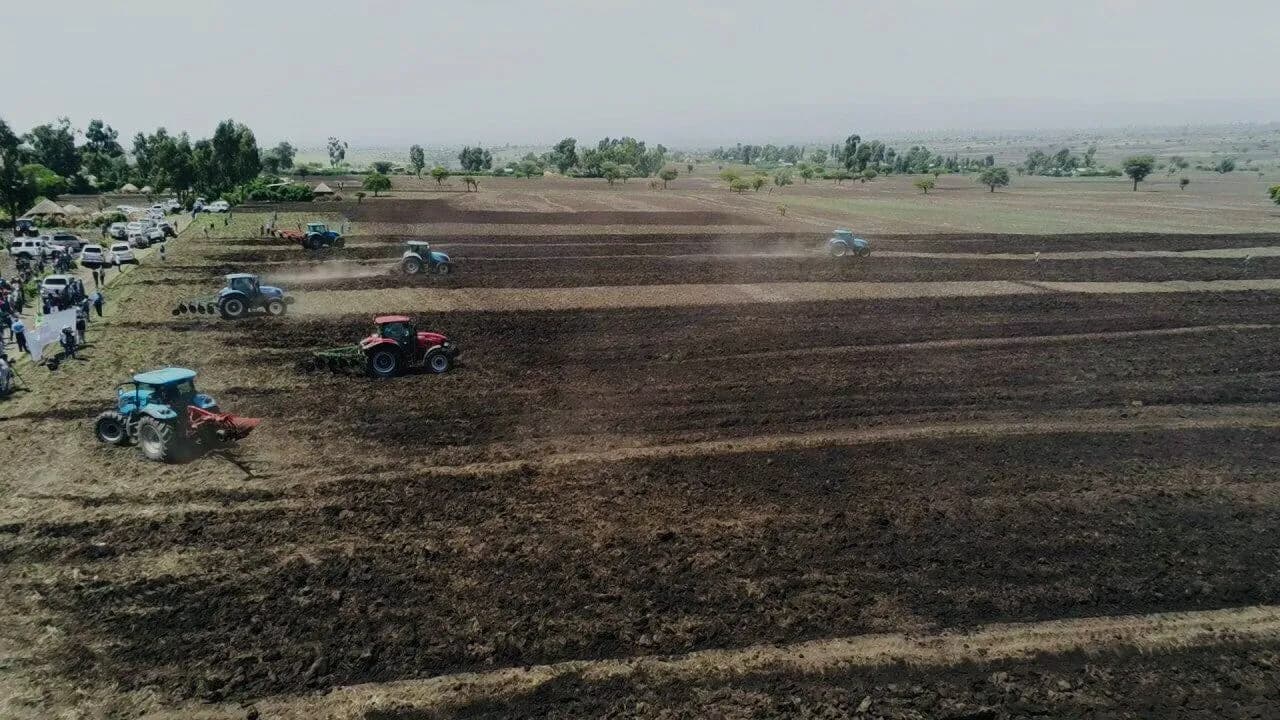Progress for 0 ad
Progress for 1 ad
Progress for 2 ad
Progress for 3 ad


Daniel Metaferiya
Addis Ababa, Ethiopia

Ethiopia’s Agricultural Transformation Institute (ATI) launched the second phase of its flagship Agricultural Commercialization Clusters (ACC) initiative yesterday at the Sheraton Addis Hotel, renewing one of the country’s most ambitious attempts to raise farm productivity and reshape smallholder agriculture. The first phase, implemented since 2019, organized farmers into cluster farming programs that consolidate fragmented plots to improve access to inputs, machinery, and extension services. ACC2 broadens that model, aiming to reach 6.5 million farmers as well as 300,000 internally displaced persons (IDPs) and refugees, while focusing on 18 commodities, from major cereals and horticulture to livestock products such as teff and, notably, wheat.
During the first iteration, the smallest clusters spanned about 15 hectares, while the largest grew to about 20 times that size. In total, nearly 99,000 agricultural clusters were established across 311 woredas. ATI officials say this expanded four-year phase is designed not only to deepen that footprint but to accelerate the shift toward market-oriented, climate-adapted agriculture.
Mandefro Nigussie (PhD), Director General of ATI, described ACC2 as a step toward a more resilient agricultural economy, one capable of building sustainable value chains and increasing national output.
“It will unlock paths to food security and economic transformation,” Mandefro said.
Agriculture remains the backbone of Ethiopia’s economy, contributing close to one-third of GDP and employing nearly three-quarters of the labor force. Yet crop yields have long lagged behind comparable economies, and productivity still struggles to rise above subsistence levels. Today, an estimated 16 million Ethiopians remain food insecure, reflecting the combined pressures of conflict, climate volatility, and economic shocks.
Ethiopia’s farm sector still faces acute gaps in mechanization, improved seed access and fertilizer supplies that constrain productivity: national mechanization intensity remains very low, with tractor and combine uptake limited to a small share of farms. Overall country-level mechanization index or intensity was estimated at 5.7% by one study.
While improved-seed reforms have begun to expand farmer access, evaluations show distribution and adoption remain uneven outside pilot programs. Meanwhile, fertilizer shortages and imbalanced nutrient supplies have persisted, forcing costly imports and spurring a major push, including a recent $2.5 billion Dangote plant deal, to build domestic production capacity.
According to ATI, the first phase of ACC reached about 4.4 million farmers, with roughly half joining production clusters. Farmland under cluster management has expanded dramatically, from 0.6 million hectares six years ago to nearly 12 million hectares today.
That shift underpins the optimism surrounding ACC2. ATI leaders argue that clustering is one of the few reforms capable of scaling quickly while also delivering immediate gains in yields, input use, and bargaining power.
Dagnachew Leul, Senior Director of Commercialization Clusters at ATI, emphasized that widespread adoption of the cluster model is essential if Ethiopia is to see meaningful improvements in productivity. In his view, fragmented landholdings, long characteristic of rural Ethiopia, limit what farmers can do, whether that means accessing fertilizer and improved seeds or adopting mechanization.
“Farmers increase their bargaining power in the market while also increasing their yields,” Dagnachew said.
He outlined plans to create farmer production and agribusiness companies (FPACs), entities that build on the organizational structure of clusters to help smallholders secure mechanization services, improved seed varieties, and market linkages. ACC2 envisions the establishment of 50 FPACs during its implementation period, groups that ATI hopes can evolve into semi-autonomous agribusiness hubs.
Financing for ACC2 will come from development partners, the federal government, and from farmers themselves, who are expected to participate through modest contributions.
“No farmer is forced to join a cluster,” Dagnachew said. “Farmers see the increased output of their neighbors and decide to join in.”
Cluster participation requires a contribution of at least 0.25 hectares, significantly smaller than the typical landholding in highland farming communities. Once organized, each cluster must adhere to eight shared principles, covering issues such as planting schedules, fertilizer application, and harvest timing. Share ownership of agribusinesses formed through clusters will be allocated according to each farmer’s land contribution.
“We are working to endow the clusters with legality and licensing to expand their market access and remove middlemen,” Dagnachew told Shega.
Farmers in the clusters will be expected to contribute about 10% of the required investment costs, with the remainder supported by ATI, government institutions, and donors.
The European Union, Denmark, and AFD remain major financiers of the initiative. When ACC first launched six years ago, Denmark pledged roughly 47 million euros, the Netherlands about 42.5 million euros, and the EU around 10 million euros. Denmark is reported to be contributing around $76 million to ACC2, from the nearly $128 million required for the project.
A central component of the second phase is the push to introduce more climate-resilient crops, particularly wheat. The program proposes new climate-resilient wheat value chains across Oromia, Afar, Amhara, and Somali regions, covering 75 woredas. The goal is to add 4.2 million tons of irrigated wheat, with an average productivity of 4.2 tons per hectare, part of a broader national strategy to reach full self-sufficiency in wheat production, estimated at around 9.6 million tons by next year.
ACC2 also aligns with several other ATI programs. These include expanding the adoption of climate-smart agriculture to 70% of participating farmers, providing dietary and nutritional information to 1.1 million households, and establishing pathways for self-sufficiency for 50% of IDPs in the project.
As Ethiopia confronts the intertwined challenges of climate stress, economic pressure, and persistent food insecurity, ATI officials argue that the ACC model provides an opportunity to create a resilient agricultural system, organized around scale, shared investment, and the promise of higher yields.
👏
😂
❤️
😲
😠

Daniel Metaferiya
Daniel Metaferiya is a writer, journalist and radio host, with a keen interest in technology. He follows developments in Ethiopia's startup ecosystem closely and is passionate about profiling unique MSMEs.
Your Email Address Will Not Be Published. Required Fields Are Marked *